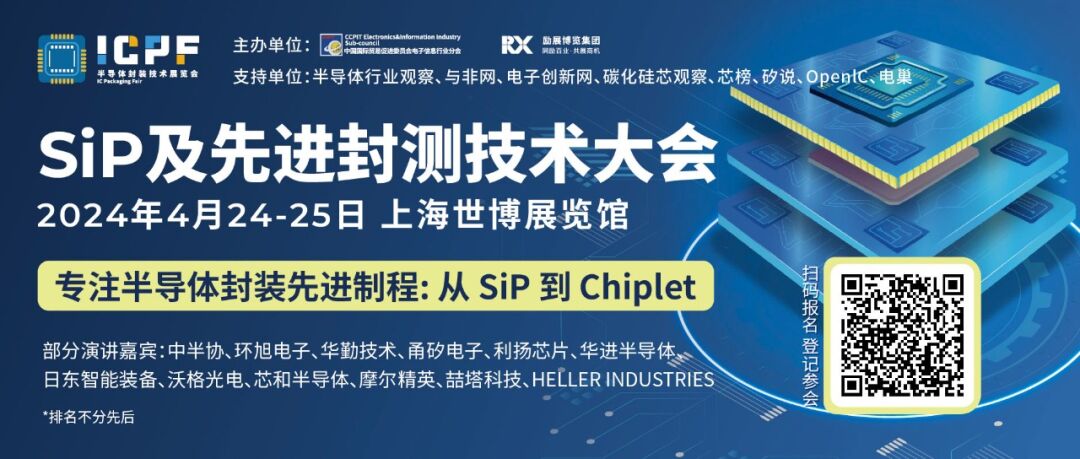
👆If you wish to see us often, welcome to star🌟 and collect it~
Source:ContentCompiled by Semiconductor Industry Observation (ID:icbank) from allaboutcircuits, thank you.
Although both standards have long been used for serial communication, RS-485 offers valuable features that RS-232 lacks. Learn more in this article.
Any form of communication requires rules to help ensure consistency among participants. In electronics, these rules take the form of standards—a widely applicable set of design specifications published as recommendations by industry associations. By following these recommendations, engineering equipment can communicate using the same electronic language, enabling efficient and reliable communication.
RS-232 (with “RS” standing for “recommended standard”) was introduced in the 1960s as a standardized interface for serial communication. While it is still useful for this purpose, alternatives such as RS-485 have emerged, significantly enhancing performance. In this article, we will explore the most important differences between RS-232 and RS-485.
01
Point-to-Point vs. Multipoint
RS-232 is a point-to-point specification, meaning one RS-232 device can only communicate with another RS-232 device. Although with a little creativity, RS-232 can be transformed into a “multipoint” network shared by more than two devices, this functionality is not included in the standard itself.
Since RS-485 is a multipoint specification, it is more flexible. Multiple RS-485 devices can communicate without any special modifications or interface circuits, as shown in Figure 1. RS-485 drivers must be able to handle 32 “unit loads,” meaning 32 receivers with 15kΩ input impedance.
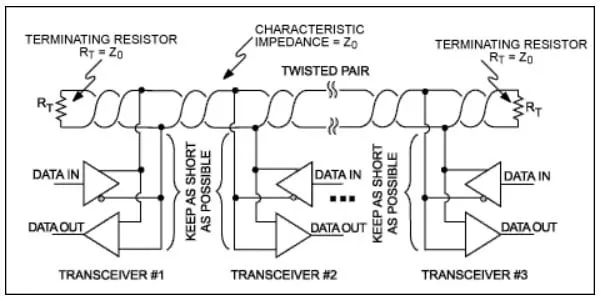
02
Voltage Levels
The original RS-232 standard specified logic levels of +25 V and –25 V. The claim that a typical household serial interface requires a signal swing of 50V is hard to believe, but then again, that was over sixty years ago. Subsequent revisions of the standard reduced the signal swing to ±12V and then to ±5V. The voltage levels in RS-485 are much lower, which is one of the most significant differences between the two standards.
The chart in Figure 2 describes the logical level data flow and the RS-232 version of the same data flow. Note that in addition to the voltage level conversion, the polarity is also reversed. The +5V logic high level becomes –5V, while the 0V logic low level becomes +5V.
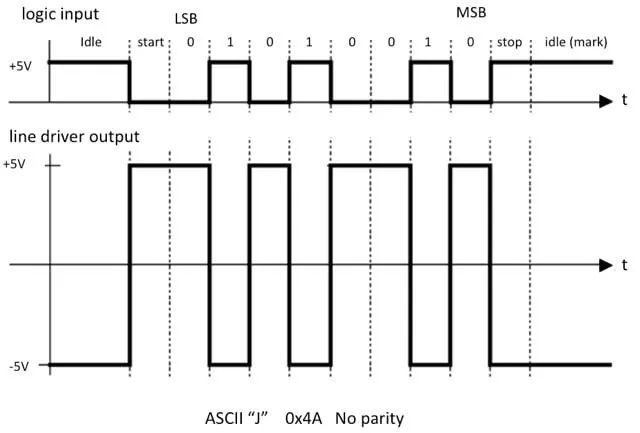
03
Single-Ended vs. Differential Signals
Typical logic level signals and RS-232 signals are single-ended, meaning one information signal requires one electrical signal. The electrical signal is referenced to the 0V ground potential. RS-485 signals are differential signals, meaning one information signal requires two complementary electrical signals. The receiver extracts information by comparing the two signals.
Figure 3 illustrates the difference between single-ended and differential signals.
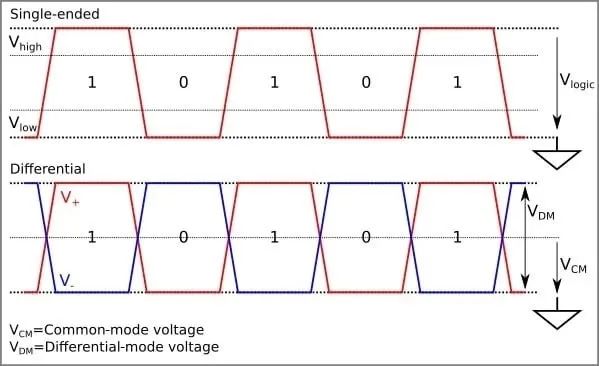
The minimum differential amplitude of the signals generated by RS-485 compatible drivers is 1.5V; the minimum differential detection threshold for RS-485 receivers is 200mV. This ensures that even when the signal deteriorates significantly while being transmitted from the transmitter to the receiver, there is still enough margin to reliably detect the digital data.
Figure 4 provides a visual representation of the minimum driver and receiver amplitudes for RS-485.

04
Signal Swing
The signal swing of the RS-485 bus is far lower than that of the RS-232 interface. This is an important advantage of RS-485, as smaller amplitude signals can simplify circuit design and improve efficiency. The lower amplitude combined with differential signaling does not increase the device’s sensitivity to EMI. In fact, RS-485 communication is more robust than RS-232 communication.
A higher data rate is another benefit associated with smaller amplitude signals. The maximum data rate for RS-232 is approximately 1Mbps. Theoretically, the maximum for RS-485 is 10Mbps — in practice, as shown in Figure 5, this limit is even higher.
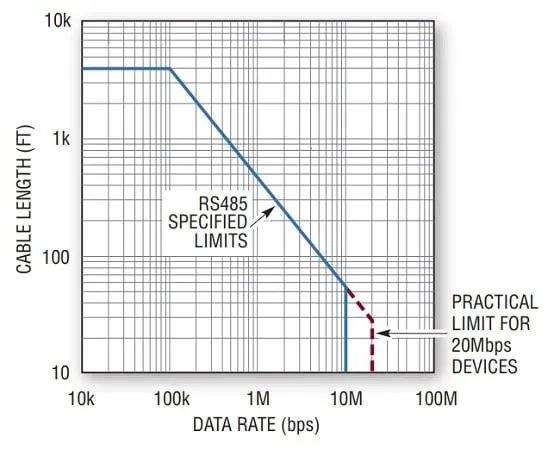
05
Signal Encoding
RS-232 describes a complete solution for serial communication. It includes the following requirements:
Electrical Characteristics
Signal Characteristics
Connection Schemes
Mechanical Interfaces
In contrast, RS-485 only specifies electrical characteristics.
Neither standard defines a signal encoding method. However, RS-232 typically uses a Universal Asynchronous Receiver/Transmitter (UART) signaling scheme, which defines start bits and stop bits, parity, and data encoding, among others. RS-485 also often uses UART.
As shown in Figure 6, one byte of UART data contains:
A start bit
Eight data bits
A stop bit
If the receiver knows the transmitter’s data transmission rate or baud rate, it can use an internal timer to sample the incoming data bits correctly. UART communication does not require additional signals to organize binary data blocks. It does not even require an external clock signal — using internal timers in both the transmitter and receiver configured to the same baud rate to generate and interpret voltage levels.
06
Key Points
RS-232 and RS-485 have similar names and uses, but they exhibit significant differences in specifications and implementation details. Their performance characteristics also differ greatly, with RS-485 surpassing RS-232 in almost every aspect. While RS-232 is a convenient and satisfactory interface for some applications, RS-485 is a superior, future-oriented solution for serial communication.
Original link
https://www.allaboutcircuits.com/technical-articles/whats-the-difference-between-rs-232-and-rs-485/
END
*Disclaimer: This article is original by the author. The content reflects the author’s personal views, and Semiconductor Industry Observation reprints it only to convey a different perspective, not representing Semiconductor Industry Observation’s endorsement or support of this view. If there are any objections, please contact Semiconductor Industry Observation.
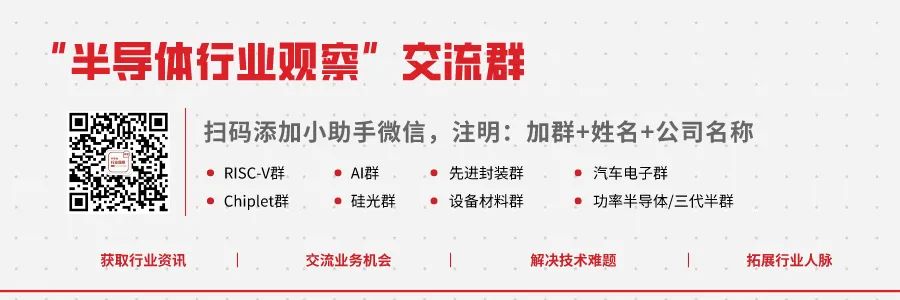
Today is the 3736th issue of “Semiconductor Industry Observation” shared for you, welcome to follow.
Recommended Reading
★Heavy Report on EUV Lithography Machines, US Released
★Silicon Carbide “Surge”: Catching Up, Internal Rolling, Replacement
★Chip Giants All Want to “Eliminate” Engineers!
★Apple, Mastering Advanced Packaging
★GPU’s Historic Moment!
★Continental Group Develops 7nm Chips
★Tang Zhongmou’s Latest Interview: China Will Find Countermeasures
★New “Savior” of EUV Lithography



“Semiconductor’s First Vertical Media”
Real-time, Professional, Original, In-depth
Official Account ID: icbank
